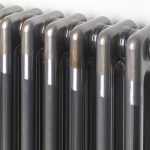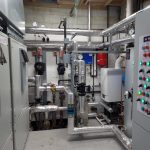Installing an air source heat pump in a confined space
Installing a heat pump in a confined space requires careful planning and consideration. Here are some steps to follow for a successful installation:
- Assess the space: Begin by assessing the confined space where you plan to install the heat pump. Measure the dimensions, including height, width, and depth, to ensure it can accommodate the heat pump unit and allow for proper airflow.
- Determine access points: Identify the available access points for bringing in the heat pump equipment and components. This may involve measuring doorways, hallways, or any other areas through which the equipment needs to pass.
- Plan the layout: Create a layout plan to determine the optimal positioning of the heat pump unit and associated components within the confined space. Consider factors such as clearances for maintenance and airflow, as well as accessibility for future repairs.
- Ensure proper ventilation: Adequate ventilation is crucial for the heat pump to operate efficiently. Evaluate the confined space to determine if additional ventilation or ducting is necessary to maintain proper airflow.
- Plan for condensate drainage: Heat pumps generate condensate during operation, so you’ll need to plan for proper drainage within the confined space. This may involve installing a condensate pump or arranging a drainage system to remove excess water.
- Install the heat pump unit: Follow the manufacturer’s instructions and any applicable local regulations when installing the heat pump unit. Ensure proper electrical connections, refrigerant lines, and any required mounting brackets or supports.
- Connect the distribution system: Depending on the type of heat pump, you’ll need to connect the distribution system, such as air ducts or underfloor piping, to provide heating or cooling to the desired areas. Make sure the distribution system is properly designed and installed for optimal performance.
- Test and commission: Once the installation is complete, thoroughly test the heat pump system to ensure it operates as intended. Check for any leaks, verify proper airflow, and confirm that the system is providing the desired heating or cooling output.
- Provide ongoing maintenance: Regular maintenance is vital to keep the heat pump running efficiently. Create a maintenance plan that includes filter cleaning or replacement, inspection of components, and scheduling professional servicing as needed.
Remember, if you’re unsure about any aspect of installing a heat pump in a confined space, it’s always best to consult a qualified HVAC professional who can provide guidance and ensure a safe and successful installation.
Recent Posts






